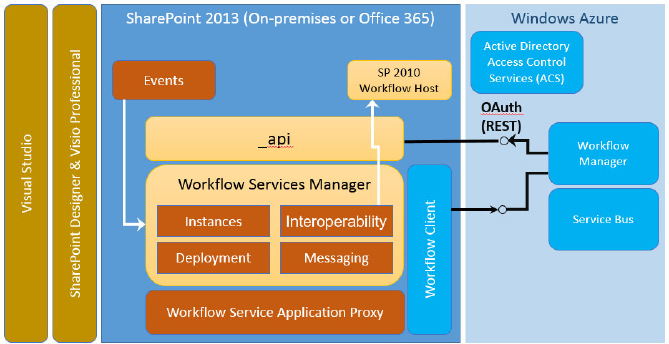INTRODUCING WORKFLOW MANAGER
The Workflow Manager is the new workflow engine that runs on the newest workflow technology from Microsoft, the Workflow Framework in .NET 4.5. The Workflow Manager also leverages the Windows Azure Service Bus when running in the cloud or Service Bus for Windows Server when running on-premises to provide workflow state consistency, reliable event delivery, and brokered messaging with the publisher/subscriber (Pub/Sub) messaging pattern. Workflow Manager and Service Bus working in concert provide a workflow service that can work at Internet scale, independent of SharePoint. This independence enables workflow processing to happen in a more predictable and transparent fashion because it is no longer coupled with the SharePoint server, competing for resources. Figure 15-1 shows the high-level architecture for the new workflow.
The integration layer that connects SharePoint to Workflow Manager is through the Workflow Service Application Proxy, and all the new workflow capability is exposed in the object model via the Workflow Services Manager. To make the actual connection from SharePoint to Workflow Manager, a workflow client is required to be installed on the SharePoint machine.
The workflow API has four major components:
- Deployment Service: This is used to publish workflows and create associations.
- Messaging Service: Events are piped into ...
Get Beginning SharePoint 2013 Development now with the O’Reilly learning platform.
O’Reilly members experience books, live events, courses curated by job role, and more from O’Reilly and nearly 200 top publishers.


